THE EDIBLE OUTDOORS # 19 - WINTERGREEN - plus a bonus - THE PARTRIDGEBERRY
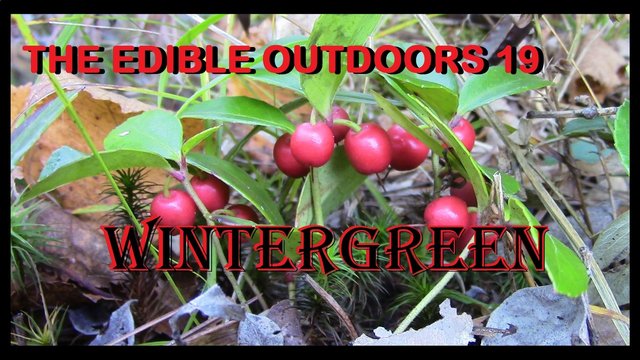
Wintergreen is the first uncommon wild edible that I can recall my father teaching me about. At some point in his youth, he had been shown the plant, and when I was a child he passed that knowledge on to me. If you saw my post yesterday, you'll already know that I recently shared the information with my young son.
As far as interesting wild edibles go, this one is a peculiar plant. Since the Partridgeberry is quite similar and was found along with the Wintergreen on our recent adventure, I'll be including it in this post as an added bonus!
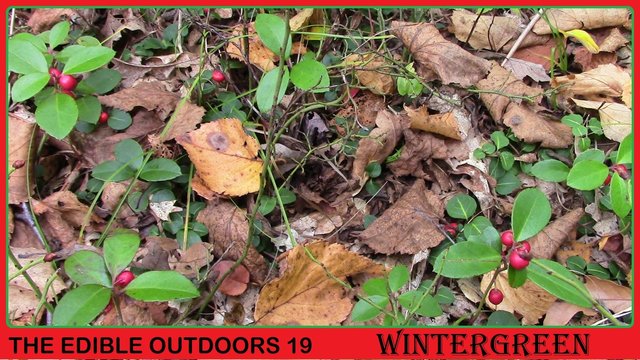
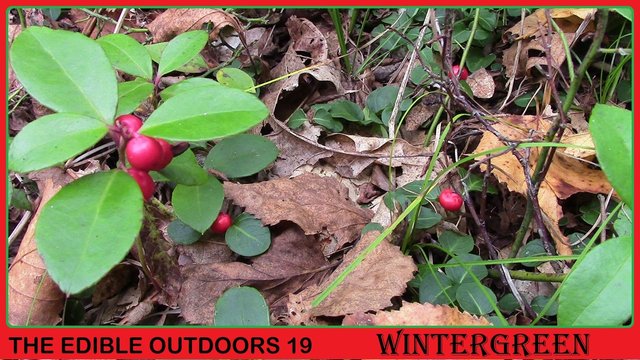
Here are some pictures of both plants growing next to one another. Since both are creeping evergreen plants that produce red berries, they can easily be mistaken for one another. The taller plant is the Wintergreen and the shorter one is the Partridgeberry.

Here is a closeup of the Partridgeberry leaf and berry.

This is a closeup of the Wintergreen leaf and berry.


In these photos, the Wintergreen is on the left, and the Partridgeberry is on the right. The big differences to note in identification are the height and the taste.
The Wintergreen will grow a few inches off of the surface, while the Partridgeberry sticks closer to the ground. Also, the Partridgeberry is quite bland and flavorless, while the Wintergreen berry is strong and minty, tasting a lot like "Winterfresh" gum.
WINTERGREEN

Wintergreen is an aromatic evergreen shrub. I believe the species pictured is Gaultheria procumbens. Its berries are the original source for the "wintergreen" flavor offered in mints, chewing tobacco, and gum. In the woods, they can make a refreshing snack that leaves your breath fresh.
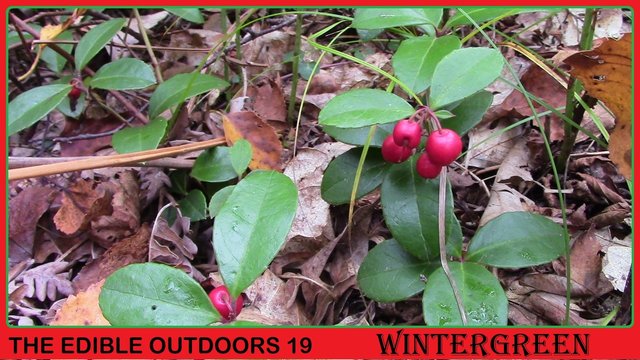
The berries have been used medicinally since at least the times of the Native Americans. The leaves can be made into a pleasant tea, and Wintergreen oil can be many times stronger than aspirin. Wintergreen has been used to treat such ailments as:
- Headaches
- Sore throats
- Bladder problems
- Help with lactation
- Stress reduction
- Arthritis
- Body aches
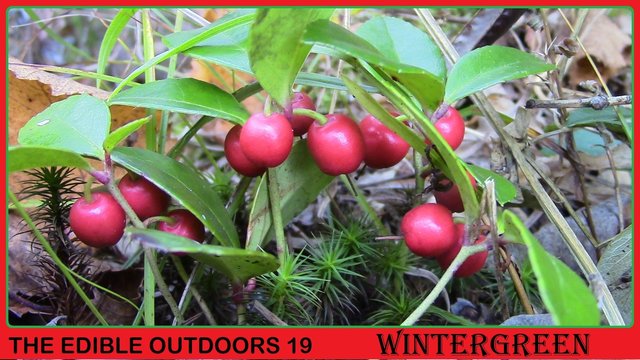
Both the leaves and the berries are edible, and due to the evergreen characteristics, they can be found year round, even under the snow.
I was unable to locate any information on the Nutritional Value of Wintergreen berries.
PARTRIDGEBERRY
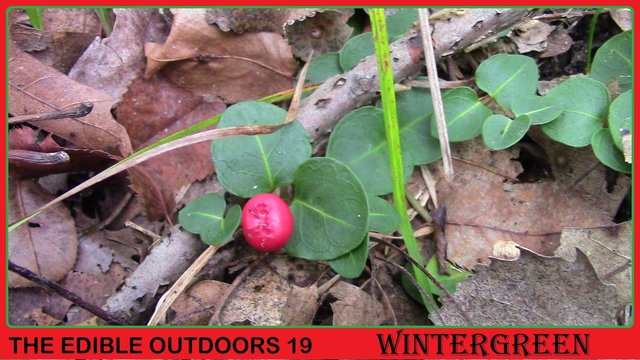
The Partridgeberry is also known as the "squaw vine" and the Latin name is Mitchella repens. It is a non-climbing evergreen vine.
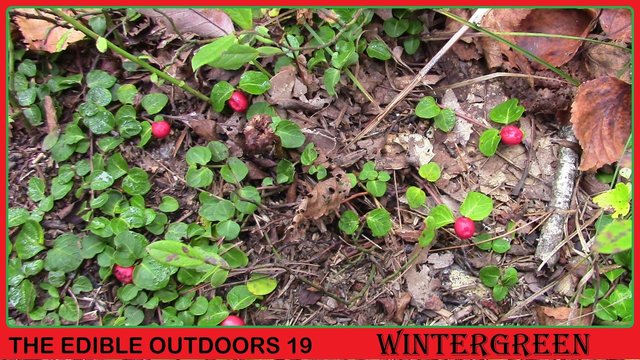
This plant is often used more as an ornamental. Often, it is included in Christmas decorations. Despite the ornamental uses, it is still an edible, but the mostly flavorless berry lacks the appeal that many foods have.
Because of its leaves always being green and the beautiful bright red berries, it is a popular ground-cover in landscaping for shady locations. In the wild, it can often be found on the forest floor or near rivers and streams. We found it on the forest floor near a stream, so I can vouch for that claim.

Though the berries are full of tiny, hard white seeds found inside the fleshy white center beneath the red skin, it is easiest to propagate from cuttings or from plants lifted with the roots still attached. The Native Americans also made this plant into a tea, and used it during childbirth.
Partridgeberry Nutrition Facts (1 cup)
*Calories : 55
*Total Carbs : 13 g
*Dietary Fiber : 5 g
*Protein : 2 g
Obviously, the Partridgeberry is not a nutrient packed superfood, but it will at least get you a few calories.

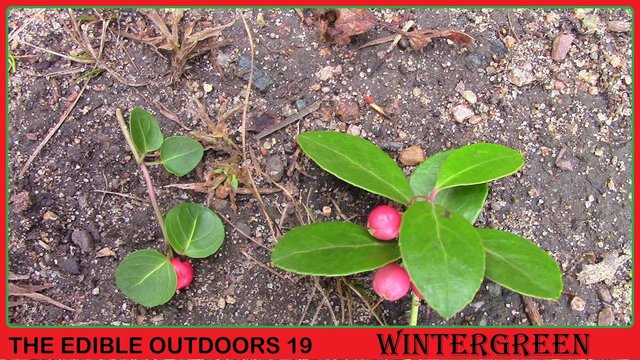
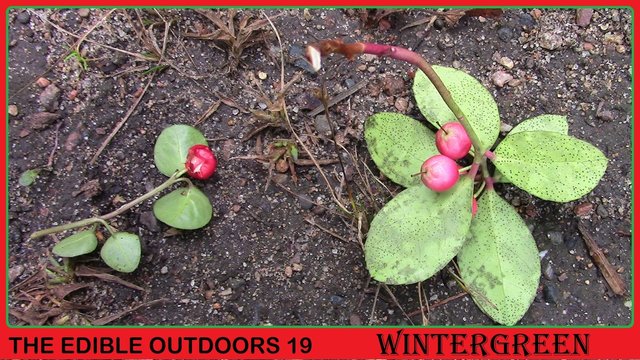
Partridgeberry on the left and Wintergreen on the right.
Here are some beautiful pictures of the berries mixed together.



We found this cute Blue Spotted Salamander under a log next to these plants when my boy and I were out exploring.

CLOSING
Either of these plants can serve as a potential food source in a survival situation and finding and identifying them can be a great hobby or family activity. As always, it is best to contact a local expert in wild edibles to learn about the various plants in the wilds of your area.
I am in no way proving any nutritional or medical advice, but am rather just sharing my experience with some wild plants we've seen up in Wisconsin.
As a final reminder on the differences:
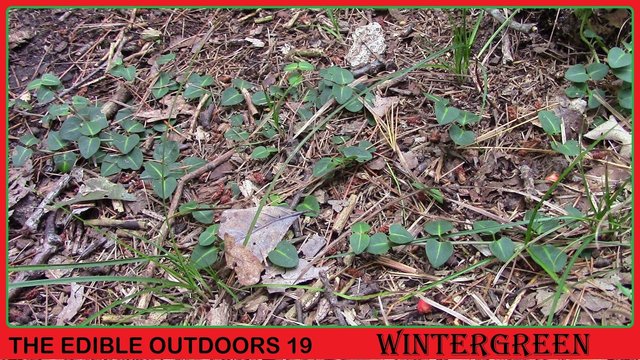
The low-growing evergreen vine with mostly flavorless berries is called the Partridgeberry.

The slightly higher evergreen shrub with fresh, minty-tasting berries is called the Wintergreen plant.
As always, I'm @papa-pepper, and here's the proof:
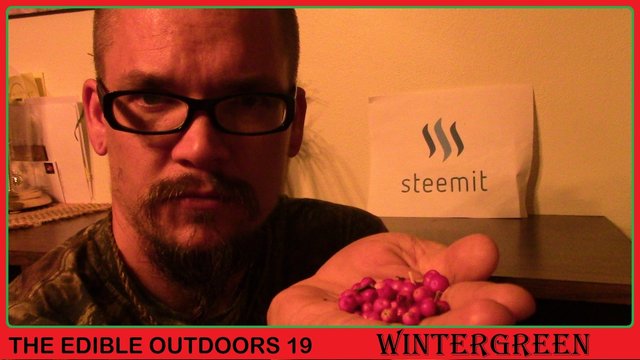
proof-of-edible-berries
(Anyone notice that necklace I made in this post?)
Here's previous THE EDIBLE OUTDOORS posts:
- 1-Common Yellow Wood Sorrel
- 2-Lamb’s Quarters
- 3-American Gooseberry
- 4-Stinging Nettle
- 5-Sassafras
- 6-Creeping Charlie
- 7-Dandelion
- 8-Plantain
- 9-Mint
- 10-Garlic
- 11-Purslane
- 12-Elderberry
- 13-Prickly Pear Cacti
- 14-Wild Lettuce
- 15-Passionfruit
- 16-Alfalfa
- 17-Chicory
- 18-American Beautyberry
FOLLOW
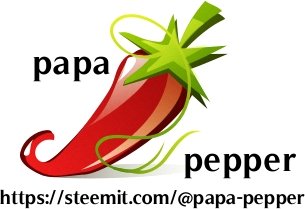
Awesome Handcrafted @papa-pepper logo kindly donated by @vlad - Thank you!!

OPERATION TRANSLATION logo provided by @oecp85.
(click link above for more info on Operation Translation.)
What a fun post. Thanks also for posting your previous articles. It's great to see how much you share your passions. Upvoted!
Thank you very much!
Perfect! I like your post because you will wonder me each time what so many interesting you can find around you and close to your home.
Also, I learn some new biological names for me in English.
PARTRIDGEBERRY in my area looks has a different view, like this
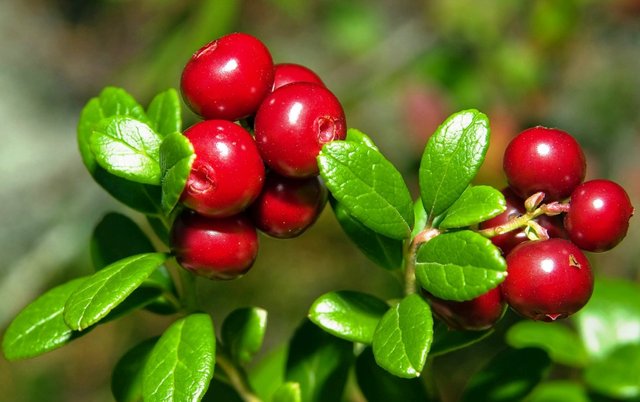
very tiny plant
Nice, thanks for sharing @smailer!
Nice one, upvoted! If you like pepper, you my like my last article where I talk about chili seed production :-)) https://steemit.com/travel/@surfermarly/travel-photograph-story-lanzarote-one-of-the-most-beautiful-and-safest-travel-destinations-on-earth-production-place-of-hot
Yeah, upvoted and followed.
Cool, thank you :-)
Congratulations! This post was so good that we decided to feature it in our latest newspaper. Click here to check it out: https://steemit.com/steemplus/@steemplus/steemplus-monday-october-10-the-daily-newspaper-that-pays-you-to-find-high-quality-content
Hey, if you guys think that i'm going to follow that link and upvote it just because you featured my post in it...
you're right.
Hey, if you think you scared me for a second...
you're right
*lol thanks papa-pepper :)
Perhaps it was not the best joke....
Wintergreen and I definitely don't get along.
It was chemistry class in high school when we were mixing chemical compounds over a Bunsen burner. No sooner had the teacher said, make sure it doesn't burn...mine began to burn and fill the entire class with white wintergreen smoke. Yup. Nearly gassed the class and I haven't been able to smell the stuff without wanting to puke for nearly 30 years!
Thankfully, that's not a memory that I have.
Thanks for sharing though!
I'm sure natural wintergreen would be okay. I'm thinking it's the chemical version that probably makes me break out in hives. At this point, I would be too wary to try. LOL
Thanks for the info Papa-pepper! So valuable to know, I love how nature is so abundant and shares her bounty with us!
Thats great thanks for sharing! It looks like i missed a few of your previous posts, on the "edible outdoors"! Thanks for listing them, i will check them out later today when i wake up! Steem On! ♨👍😉♨
Enjoy them and steem on!
Another great post!
I love the natural survival posts!
Me too!
Thanks!
Yeah, my upvote kick up.
Nice Berry papa
Thanks @bullionstackers!
Too bad about your chocolate.
It is so great to find wintergreen out in the wild, especially when it's got berries on. It's great to have wintergreen tea, around the campfire or on a break during a hike. In Wisconsin, you have the Yellow Birch (Betula alleghaniensis) that has the same wintergreen oils in it. It's good for tea, too. The Sweet Birch (Betula lenta) is more in the northeast US, but it has an even stronger flavor -- it was the original source for commercial wintergreen oil. It's a lot easier to harvest twigs and branches than tiny little wintergreen leaves! Of course, now commercial wintergreen oil is just a laboratory chemistry concoction.
Here's some fun when you are in Wisconsin with folks that are hesitant to really breathe deep and smell things out in the woods. Find some wintergreen or yellow birch and have them smell that (scrape some bark off the birch twigs first). Then find some sassafras and have them smell the scraped twigs. By then, they have gotten over their hesitation. So then go to the skunk cabbage and give them a piece of leaf to smell. This works every time! It's good for laughs all around - but more importantly, it gets them over their fear of really smelling things in the outdoors.
I found a whole pile of both berries again today at a camp and we were sharing with some others.
That skunk cabbage trick would work, I grew up with it!
That's great! It's nice when you can find enough to eat and share! They would be good in a smoothie!